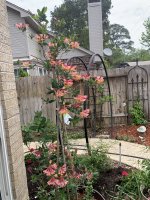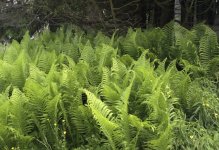April 2021 flower bed Project
This strip of yard, approx 6x35’, the wife wants to turn it into a wild flower bed. The idea is that wild flowers should be relatively rugged and not depend on regular water as there is no sprinkler system in this part of the yard. So you know who gets to do the brunt of the work.

Since we live in a community that has covenants, I decided to run this by the home owner Association who approved, but I said flowers and mulch, not specifically wild flowers which can seen unruly. So we’ll see what kind of reaction if any we get from them. Anyway in the picture I just scalped it with the lawn mower, and per Monty (Gardener’s World), I’ve started to vigorously rake it to expose the dirt, not supposed to remove all of the grass.
Today, I’ll buy a stack of pavers to define the property line which will be flush with the ground (already checked and got an ok from the neighbor. I really need to get this area raked and the seeds spread as it is getting late in the season to start such plants. You want them going before it gets stink’n hot. And I’m going to drop a border of crushed rock around it using landscaping edging to make the area look more defined and refined to counter any unruliness of the wild fires themselves.
This area will also get some tuffs of ornamental grass and 2 Acoma dwarf (white) Crepe Myrtle bushes, 7-10’, but we will prune them as they commonly are around here to resemble trees, pruning them up with a couple of main stalks In the bottom 6’ or so. Typically each year, they are topped And new growth is encouraged.
So has anyone worked with wild flowers? I was surprised that they are typically sewed in existing grasses, but that makes sense when you see them growing in the wild in pastures. Any suggestions?

















